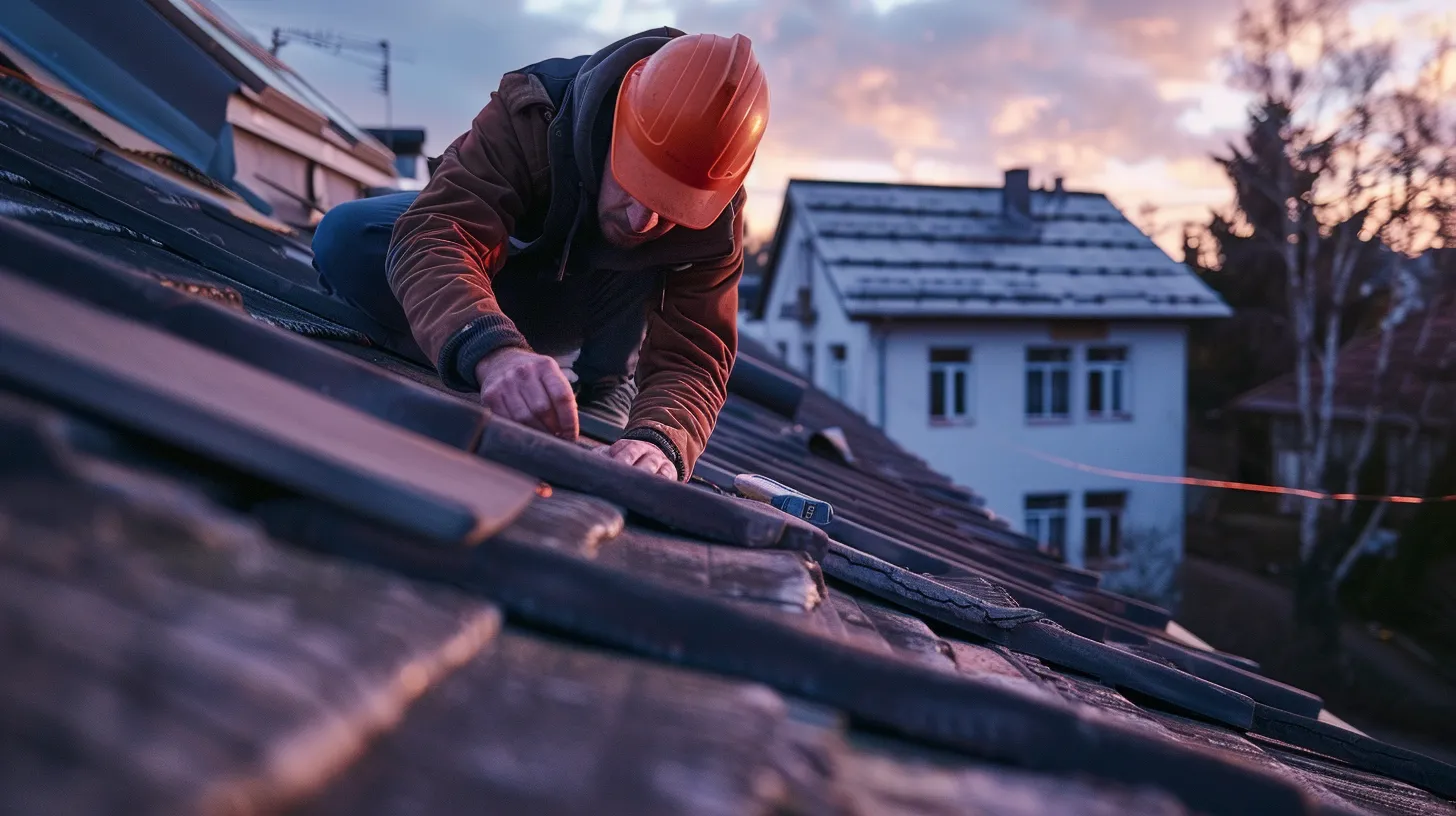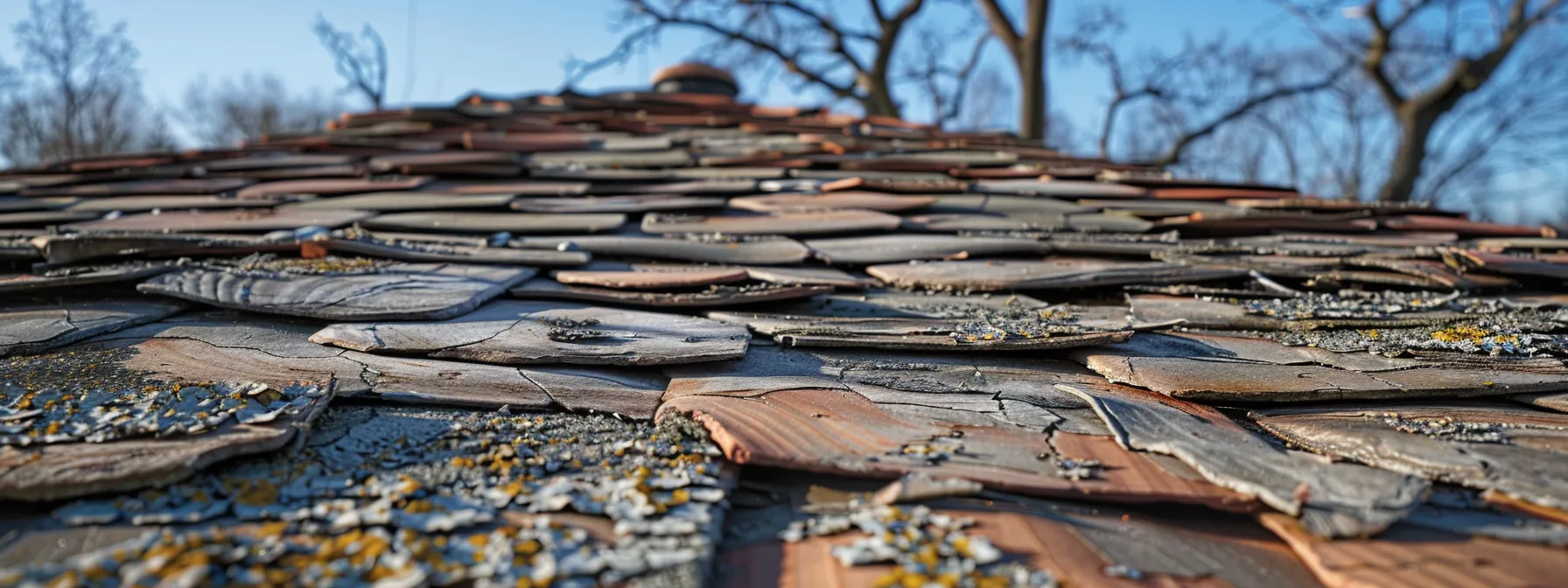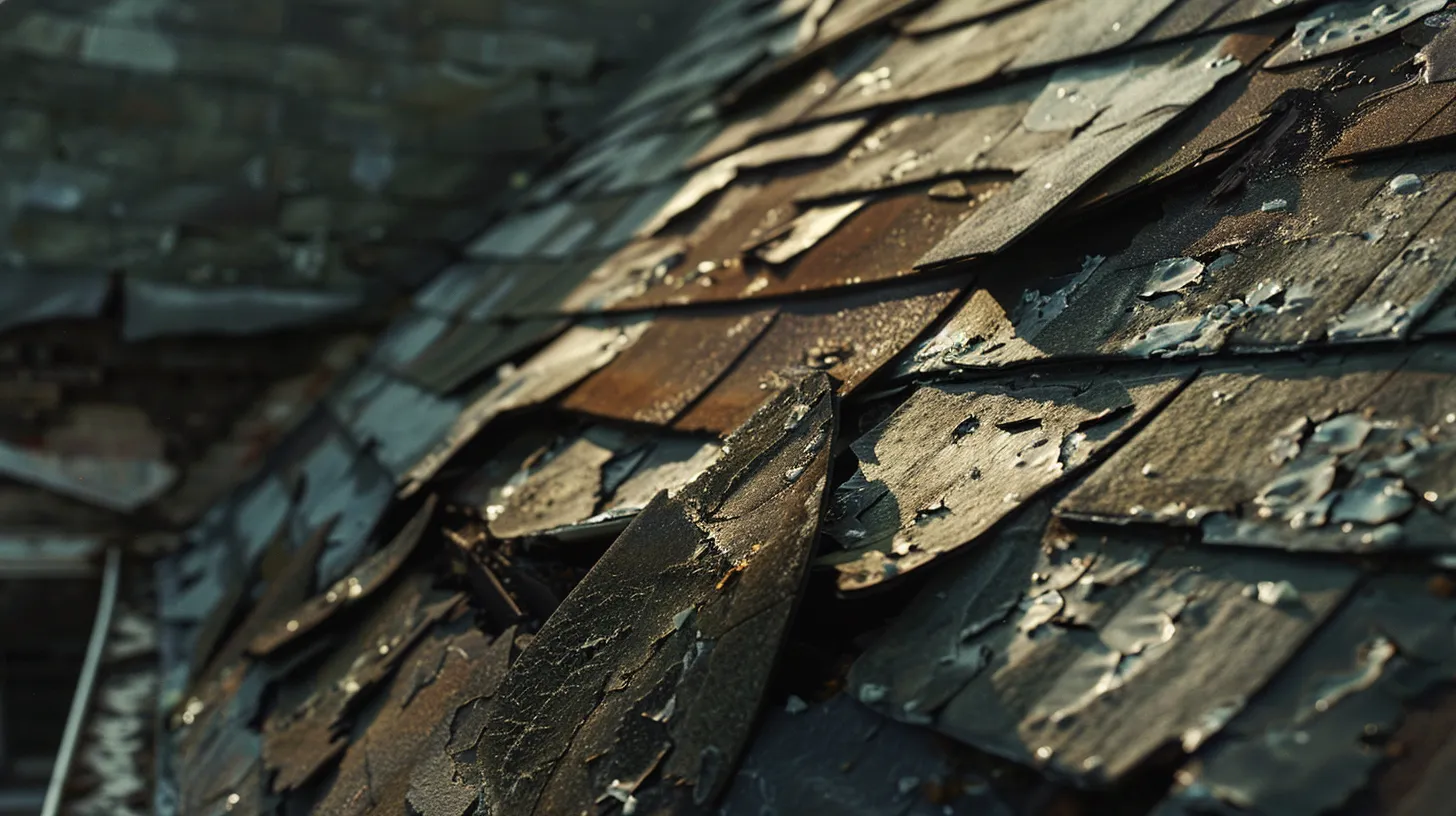
Protect Your Home: Ensuring Roof Integrity After Storms
Promoting Roof Integrity in the Wake of Severe Weather
Have you inspected your roof after the last severe weather event? This post covers the need to monitor your roof’s condition, use quality materials for repairs, and improve drainage systems to prevent water damage. You will learn how to identify key issues affecting roof integrity and how to take appropriate actions to avoid costly repairs. By following these guidelines, you can protect your home and save money in the long run.
Understand the Importance of Roof Integrity After Severe Weather
You will identify weather conditions like hail or wind that affect roof stability while learning to recognize damage signs after severe weather. You gain insight into roof inspection after a storm, protecting your home insurance and structural investment. You also learn how a sound attic contributes to safeguarding the overall integrity of your home.
Identify Common Weather Conditions Affecting Roof Stability
You notice severe weather conditions that can weaken your building’s structure, such as forceful winds dislodging tiles and hail impacting exposed areas. When you perform an inspection, you should examine the flashing around roof joints, chimney, and ensure proper ventilation to prevent issues like mold. For comprehensive support, consider services like roof repair replacement.
Strong gusts and intense rain can accelerate wear and wear on your roof, compromising its durability over time. You benefit from addressing these concerns early by monitoring chimney seals and ensuring that flashing remains intact, while ventilation helps maintain a dry environment that minimizes mold risk.
Recognize Signs of Damage Following Storms or Severe Weather
You survey your roof for indicators of compromised integrity, noting any scattered debris near damaged areas and missing asphalt shingle pieces. These observations help you assess potential roof damage that may require immediate roof repair to avoid further complications with your ceiling and overall structure.
You examine the condition of flashing and exposed sections after severe weather, spotting signs such as chipped or dislodged asphalt shingle and nearby debris build-up. By recognizing these damage signals swiftly, you set the stage for timely interventions that safeguard the ceiling and protect your structural investment from ongoing harm.
Learn How Roof Integrity Protects Your Home Investment
You ensure that your home investment remains secure when you recognize how a resilient roof minimizes storm damage. Regular roof inspections by a professional roof specialist help you identify a damaged roof early and prevent further issues that could affect homeowners insurance cover.
You benefit from timely maintenance and repairs that preserve your property’s value, reducing the risk of extensive storm damage. A proactive approach with routine roof inspections and expert assessment by a professional roof provider brings peace of mind while protecting your investment overall.
Assessing Roof Condition Regularly for Long-Term Durability
Schedule annual roof inspections and have your roofing professionally roof inspected to maintain durability after severe weather. You benefit from a storm damage inspection, learn DIY roof inspection tips, and prepare for storm damage repairs. Professional roof inspection services provide clear guidance and help secure your home’s structural stability.
Schedule Annual Roof Inspections to Evaluate Its Health
You should consider scheduling regular inspections to catch any early signs of roof storm damage. Taking advantage of free roof inspections offered by reputable roofing contractor services helps you detect any issues before they escalate into a storm damage roof scenario that may compromise your building’s security.
Regular assessments of roofs ensure that you remain proactive in maintaining the overall health of your home investment. By visiting a professional roofing contractor annually, you gain clarity on potential challenges and can act quickly to prevent severe roof storm damage that might otherwise lead to costly repairs.
Utilize Professional Services for Thorough Condition Assessments
You benefit from enlisting professional services to conduct a thorough roof inspection that targets potential issues such as storm damaged roof areas and compromised skylight seals. By having an expert evaluate your roof, you ensure that any necessary emergency roof repair measures align with your insurance policy and structural maintenance standards.
An experienced professional can identify subtle signs of wear often overlooked during DIY assessments, allowing you to address concerns before they escalate. Their insights guide you in establishing practical repair schedules, ensuring your roof remains robust and compliant with policy guidelines while maintaining the integrity of components like your skylight.
Learn About DIY Roof Inspection Tips for Homeowners
You inspect your roof regularly, keeping a close eye on details like loose fasteners and minor cracks that could allow moisture buildup. You apply practical tips by examining a metal roof carefully to ensure its warranty remains valid and any deterioration is addressed early to maintain safety.
You assess potential issues by checking for signs that indicate a need for professional help while performing your DIY roof evaluation. You focus your attention on areas where debris may accumulate and cause wear, ensuring structural integrity and addressing concerns before minor damages escalate.
Choose Quality Materials to Promote Roof Resilience
You compare wood and metal roofing options to assess durability and longevity while considering energy-efficient choices that withstand harsh elements. You account for emergency fixes, prevent mildew buildup, and monitor wear and tear. You also research local suppliers so you secure reliable materials, ensuring your roof remains strong and resilient against severe weather.
Compare Different Roofing Materials for Durability and Longevity
You consider roofing materials that withstand harsh conditions such as heavy snow and wind. You can opt for options like Owens Corning products which are engineered for durability, while a reliable contract with professional installers minimizes potential hazards during installation.
You benefit from comparing material options for extended longevity and resilience against severe weather impacts. You may find that high-quality roofing solutions not only manage hazards effectively but also deliver an enduring performance that reduces maintenance demands over time.
Explore Energy-Efficient Options That Withstand Harsh Elements
You can choose energy-efficient roofing options that minimize heat loss while resisting harsh weather. Selecting high-performance materials not only improves roof longevity but also reduces energy bills, meeting your need for cost-effective protection and sustainable performance.
You benefit from installing advanced roofing solutions that offer superior insulation and withstand adverse elements. Investing in these materials directly addresses your concerns about energy conservation and long-term durability, ensuring your roof remains resilient when facing severe weather conditions.
Research Local Suppliers for Reliable Roofing Material Sources
You gain significant assurance by researching local suppliers capable of providing reliable roofing material sources that meet industry standards and support your investment. You benefit from personal visits and direct communication with vendors who understand regional weather challenges and supply products tailored to your roof’s specific needs.
You answer the demand for quality materials by identifying suppliers with strong reputations and verifiable credentials in your area. You enjoy the advantage of sourcing materials that improve installation durability, reduce maintenance costs, and contribute to your home’s resilience against severe weather conditions.
Implement Effective Repairs to Maintain Roof Strength
You follow best practices for minor roof repairs and maintenance, while consulting experts for major damage or structural issues. You understand the cost-benefit of timely roof repairs to protect your home. This section outlines practical steps for maintaining roof strength, ensuring your property’s overall resilience after severe weather.
Follow Best Practices for Minor Roof Repairs and Maintenance
You perform regular minor repairs to address loose shingles or minor leaks as soon as you notice them. You save time and money by taking prompt action and consulting trusted roofing professionals when needed, ensuring the overall roof strength remains intact after severe weather.
You keep your maintenance routine consistent by following established repair best practices for small damages. You benefit from clear repair instructions and firsthand advice from seasoned experts who have handled storm impacts, which keeps your roof secure and reduces the chances of future problems.
Consult Experts for Major Damage or Structural Issues
You rely on specialist guidance to address significant structural issues affecting your roof, ensuring your repair approach aligns with current building standards. You benefit from expert assessments that identify subtle damage and offer tailored repair plans, reducing the risk of further deterioration after severe weather.
You engage qualified professionals who provide comprehensive evaluations for serious roof concerns, supporting timely and effective repair actions. You experience the advantage of expert insight that not only addresses immediate problems but also reinforces the long-term durability of your home.
Understand the Cost-Benefit of Timely Roof Repairs
You recognize that prompt repair of minor roof issues stops small problems from escalating into costly repairs later. Your proactive approach saves money by reducing the need for major interventions and prevents further damage that could disrupt your daily living and home safety.
You benefit from regular maintenance that preserves the strength of your roof and cuts down long-term repair expenses. Your hands-on experience shows that addressing issues swiftly keeps repair costs low while ensuring that your home remains secure against severe weather effects.
Enhance Roof Drainage Systems to Prevent Water Damage
You assess reliable gutter systems to ensure efficient water flow while you learn about the role of downspouts and drainage pipes in directing water away. You also examine landscaping solutions that improve roof drainage, reducing water damage risks. This overview prepares you for focused insights on each element, ensuring your roof integrity withstands severe weather conditions.
Identify Effective Gutter Systems for Efficient Water Flow
You inspect your roof drainage systems to verify that gutter systems channel water away from your property efficiently, particularly after severe weather events. You can rely on proven materials and designs that resist clogging, ensuring that water flows freely to protect your home from water damage and prolong roof longevity.
You benefit from choosing gutter systems engineered for heavy rainfall that prevent water build-up by directing moisture away from vulnerable areas. You maintain roof integrity by selecting products backed by quality standards, which offer a practical solution for keeping your building secure during intense storms.
Learn About the Importance of Downspouts and Drainage Pipes
You inspect your downspouts and drainage pipes routinely, ensuring they guide water away from your home effectively after a storm. You rely on these components to prevent water buildup, which can lead to roof degradation and additional repair costs.
You verify that your downspouts are clear and securely attached to your drainage pipes so water flows without interruption. You benefit from a well-maintained drainage system that minimizes water damage and supports the durability of your roof during severe weather events.
Explore Landscaping Solutions to Improve Roof Drainage
You can improve roof drainage by incorporating landscaping strategies that guide water away from your home effectively, such as designing gentle slopes and berms near the roofline. This method reduces water pooling and relieves pressure on your gutter systems, ensuring that severe weather does not compromise your property’s integrity.
You gain lasting benefits by using landscaping features designed to manage excess water, including rain gardens and strategically placed shrubbery that enhance roof drainage. These solutions help you channel water safely, protect your structure, and reduce the risk of water damage during heavy downpours.
Prepare Your Roof for Future Severe Weather Events
Prepare to safeguard your home by developing a storm preparedness plan for your roof, investing in protective coverings or impact-resistant materials, and staying informed on local weather trends. This section outlines practical tips to fortify your roof before severe weather arrives, ensuring lasting durability and minimizing damage risks in your home.
Develop a Storm Preparedness Plan for Your Home’s Roof
You create a storm preparedness plan by assessing your home’s unique needs and scheduling periodic inspections to catch early signs of damage. You take practical steps to reinforce vulnerable roof areas using quality materials and secure attachments that have proven effective in similar severe weather situations.
You set aside time to review local weather patterns and coordinate with roof specialists to tailor your plan. You benefit from proactive measures that safeguard your roof against the impact of future storms while ensuring your home remains structurally secure and ready for any weather challenges.
Invest in Protective Coverings or Impact-Resistant Materials
You invest in protective coverings or impact-resistant materials to guard your roof against wind, hail, and intense rainstorms. You find that choosing advanced products designed for severe weather significantly improves durability and minimizes repair needs.
You opt for materials that undergo rigorous testing for resilience against heavy impacts and severe weather changes. You benefit from solutions that not only strengthen your roof but also maintain your property value while ensuring long-lasting protection during adverse conditions.
Stay Informed on Local Weather Trends to Anticipate Issues
You keep abreast of local weather updates by subscribing to dependable weather services and apps that provide real-time alerts, which helps you prepare your roof for upcoming storms. This approach ensures you can address vulnerabilities proactively and minimize potential damage to your building structure.
You use verified weather trends as a basis for scheduling timely inspections and maintenance, making sure your roof remains resilient against severe conditions. By monitoring forecasts and historical data, you stay informed and ready to protect your home investment effectively.
Conclusion
Maintaining the stability of your roof after severe weather protects your home investment and ensures overall structural security. You monitor and repair damage promptly, preventing minor issues from escalating into costly repairs while upholding the health of your property. You invest in durable materials, efficient drainage systems, and timely professional assessments to safeguard your roof against future storms. You secure peace of mind and long-term resilience by taking proactive measures that address both current issues and future threats.




